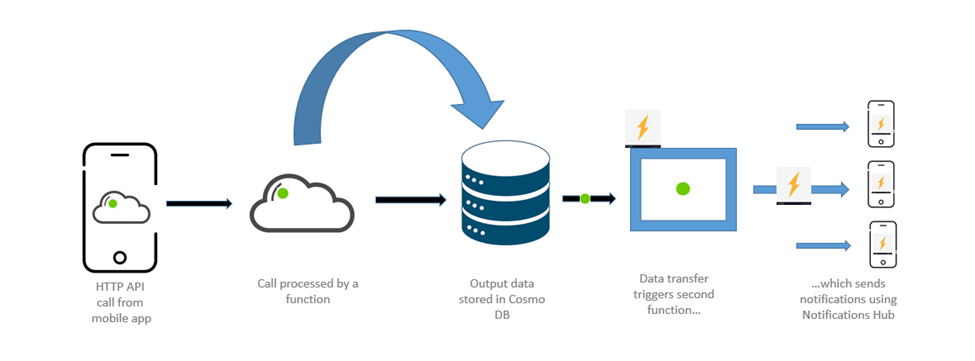Cloud Serverless Computing
The main objective of Serverless Computing is to make it easier for software developers to draft code intended to run on a cloud platform that performs well-defined jobs.
Join the DZone community and get the full member experience.
Join For FreeWhat Does Serverless Computing Do?
Serverless computing is an execution model in which the cloud provider acts as the server and manages the resource allocation dynamically. It is scalable and charged based on how much resources are consumed (pay-as-you-go-model), which can help in reducing capital expenses.
Using a serverless model, a cloud provider runs physical servers and dynamically allocates the resources on behalf of developers who can deploy code directly into production. Serverless Computing contributes into two groups, Function as a service and Backend as a service.

Serverless computing helps developers to do the development and deployment without any hassle as it takes care of the server-related activities with flexibility. Also, the day-to-day tasks such as maintenance, security patches, load balancing, capacity management, logging, and monitoring are all offloaded to a cloud services provider.
Nowadays, all leading cloud service provider contributes to a serverless platform, including Microsoft Azure (Azure Functions), Amazon Web Services (AWS Lambda), and Google Cloud (Google Cloud Functions). Completely serverless computing, microservices, and containers dominate the technologies typically considered to be at the core of cloud-native application development.
Serverless Computing Use Cases
- Trigger-Based Tasks — Task Scheduler provides both time-based and event-based triggers. With this, you can schedule any program to run at any time or when a specific event occurs.
- Asynchronous Processing — Serverless functions can manage the application tasks without breaking the flow of the application or adding user-facing latency.
- Security Checks — When we set up a new container, a function can be invoked to scan the instance for misconfiguration or vulnerabilities.
- CI/CD Pipeline — The serverless model can automate CI/CD pipelines. For example, code commits can activate a function to create a build, and pull requests can activate automated tests.

Benefits of Serverless Computing
- Productivity Improvement — Serverless computing can increase developer productivity & It is cost-effective since you only pay for the processing time you use. The code can be written in any language, such as C, C#, Python, JavaScript, Java, Node, Ruby, etc.
- Cost-Effective Performance — Provides dynamic stability & parallel workload processing can be done by using this model.
- Usage Visibility — Serverless platforms provide complete visibility into the system and can accumulate usage information systematically.
- Operational costs are reduced in a serverless model because there is no need to pay extra tariffs for their maintenance.
Limitations of Serverless Computing
- Less Control — Since the monitoring activities are managed by a cloud provider, the organizations will have less control over the provisioning of infrastructure.
- Migration — After a few years, if the organization wants to migrate to another cloud provider from, say, AWS to Azure or GCP. The code might need to be rewritten; the same APIs may not exist on another vendor.
- Testing — Since every time a Serverless instance creates a new version of itself, and that means it’s difficult to collect the data necessary to test & fix. Also, the code is running on the backend, which the developers have no visibility into if something isn’t working.
Cloud Providers Used for Serverless Computing
There are many cloud providers available in the market for Serverless Computing. Here are three cloud providers, among them explained.
Azure Functions
Azure Functions is a serverless computing service hosted on the Microsoft Azure public cloud & solution to write less code execution without any need for server infrastructure, web server, or any configurations. They are best suited for smaller apps that have events operation backup, sending emails, and event schedules, such as database cleanup. It automatically handles all the computing resources those processes require. Another feature of Azure Function is to integrate the Azure Function with different Azure services and with different third-party services like Azure DevOps services, GitHub, Azure Cosmos DB, Azure Event Grid, etc., or on-premise systems.

AWS Lambda
AWS Lambda is a serverless platform provided by Amazon Web Services. AWS Lambda was designed for use cases such as image uploads to Amazon S3, updates to Dynamo DB tables, and responses to website clicks. Lambda runs the function only when needed and extends automatically. It costs only for the compute time that is consumed—there is no charge when the code is not running. AWS Lambda allows the integration of the application server needs with huge mailing services such as SES.

Google Cloud Functions
Google Cloud Functions is a serverless model execution for building & connecting google cloud services. With this, the functions are associated with events emitted, services, and infrastructure. It helps in removing the work of managing servers, backup operations, and configuration of the system. The developers can deploy the code in the cloud to manage asynchronous workloads such as APIs, Data processing, etc. Developers can focus on building functions rather than architecting infrastructure. Google Functions can support multiple coding languages to develop and upload easily.

Opinions expressed by DZone contributors are their own.

Comments